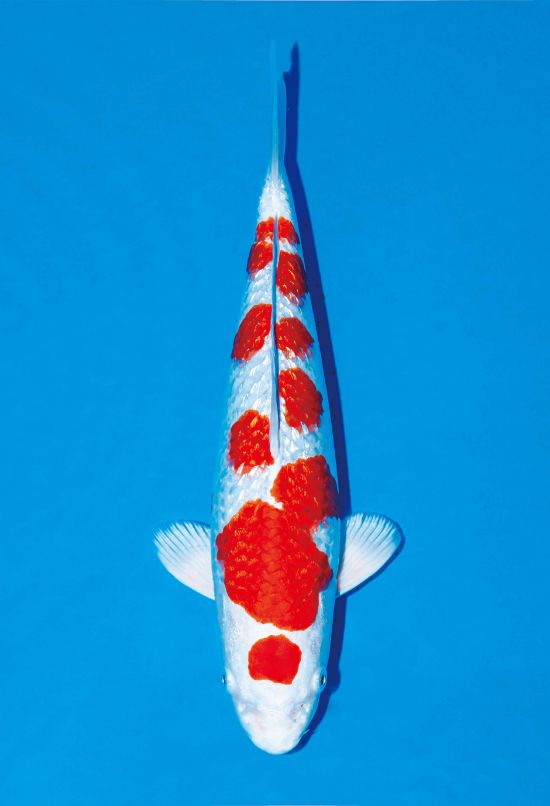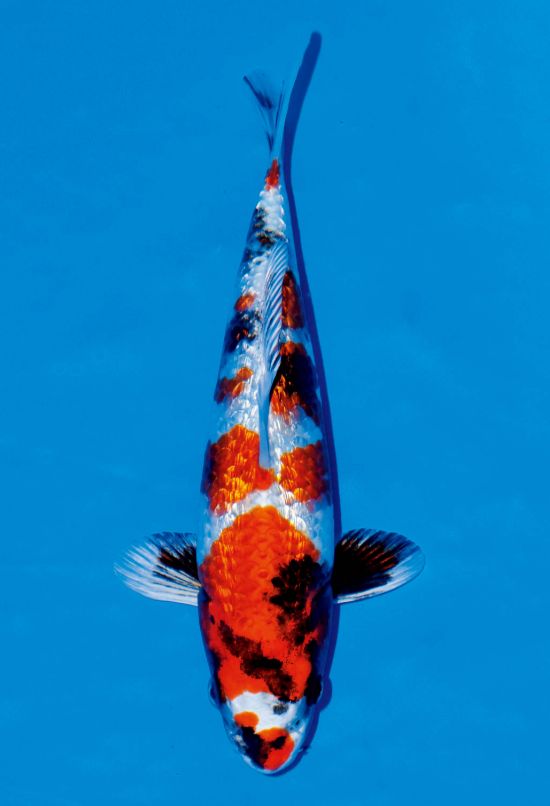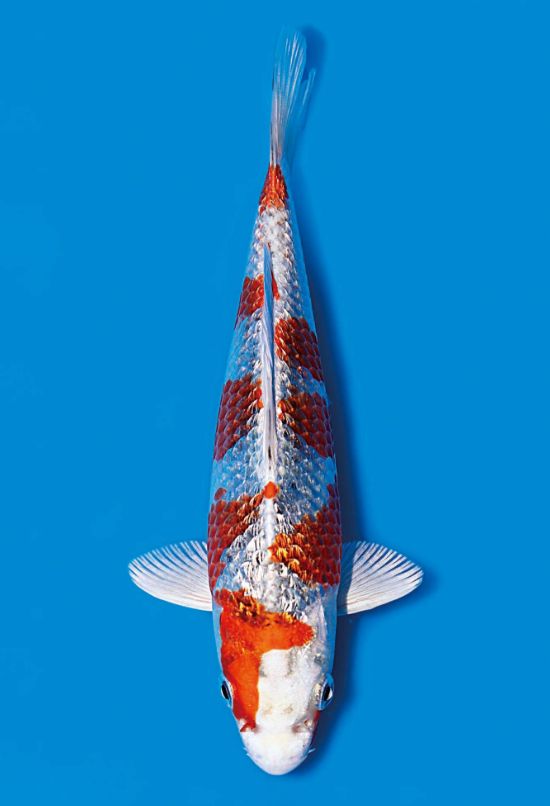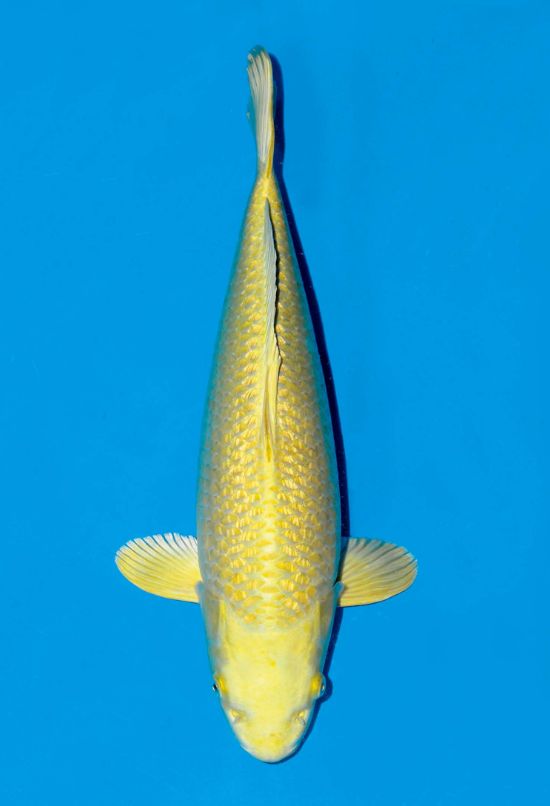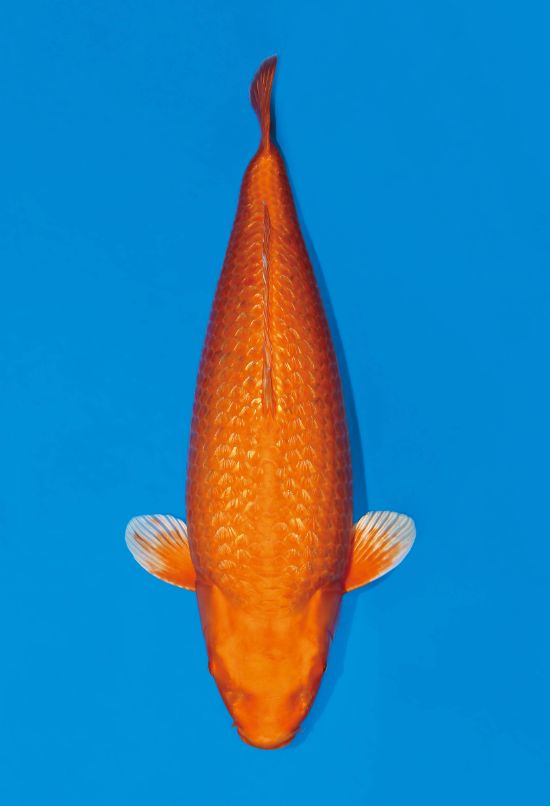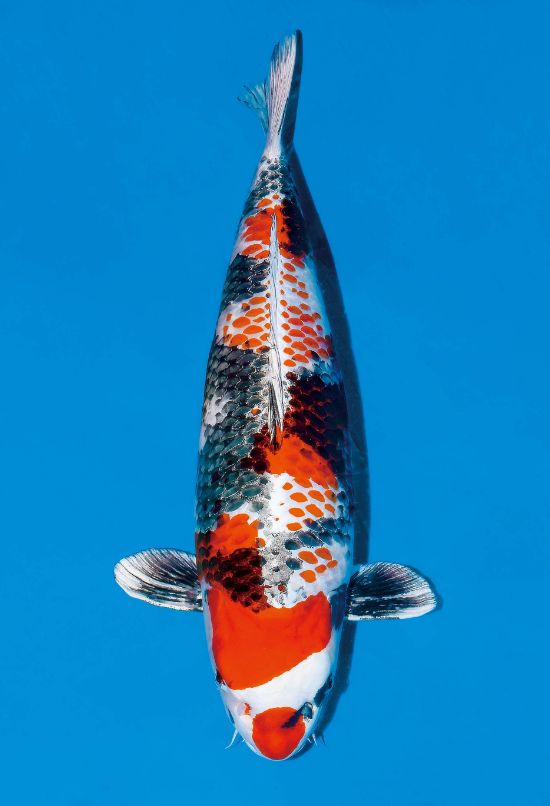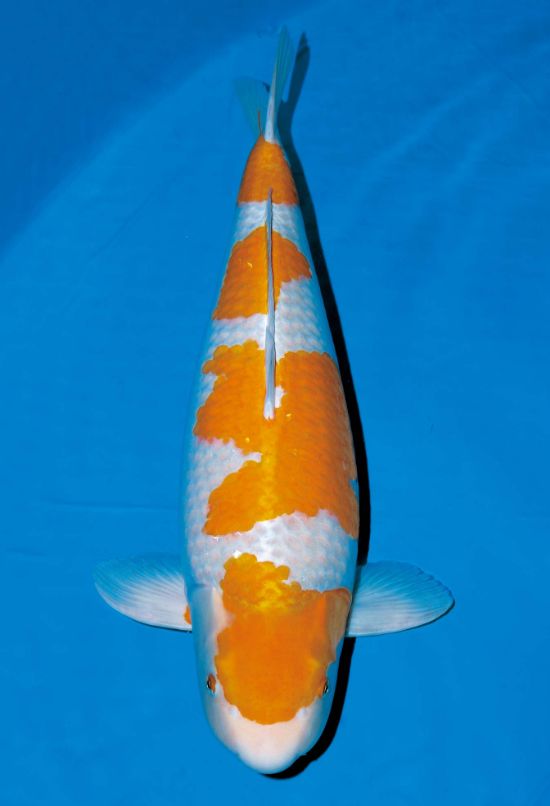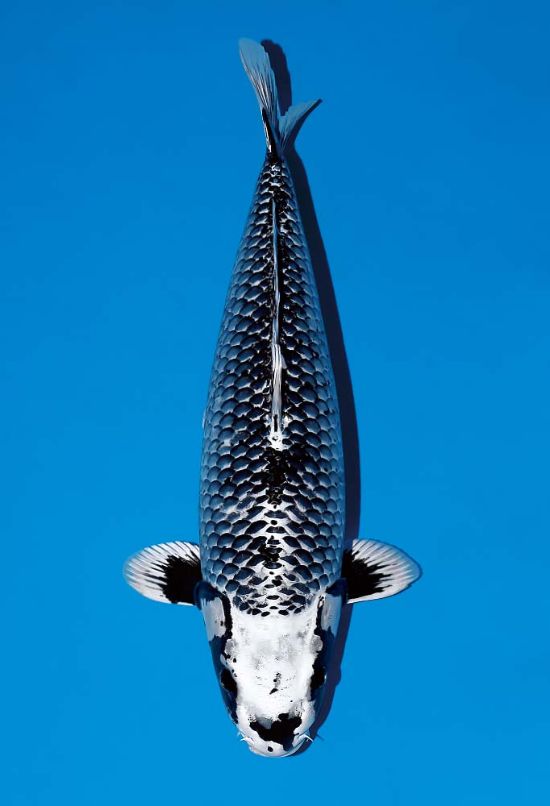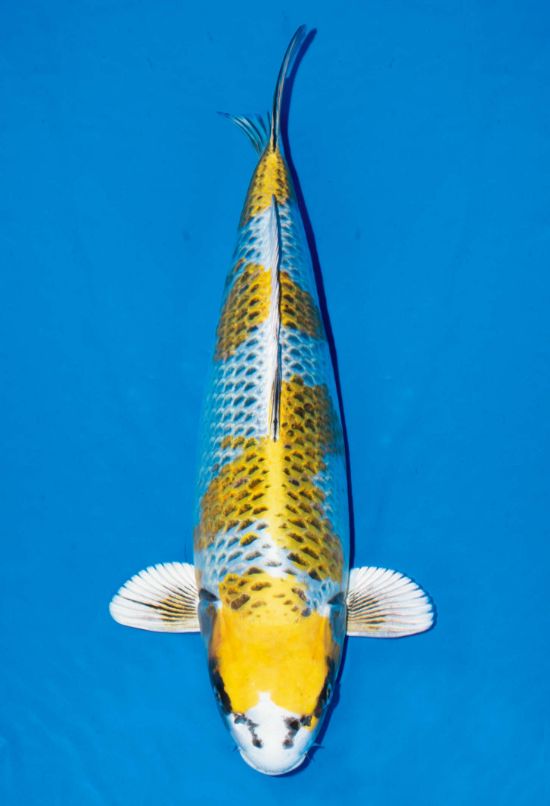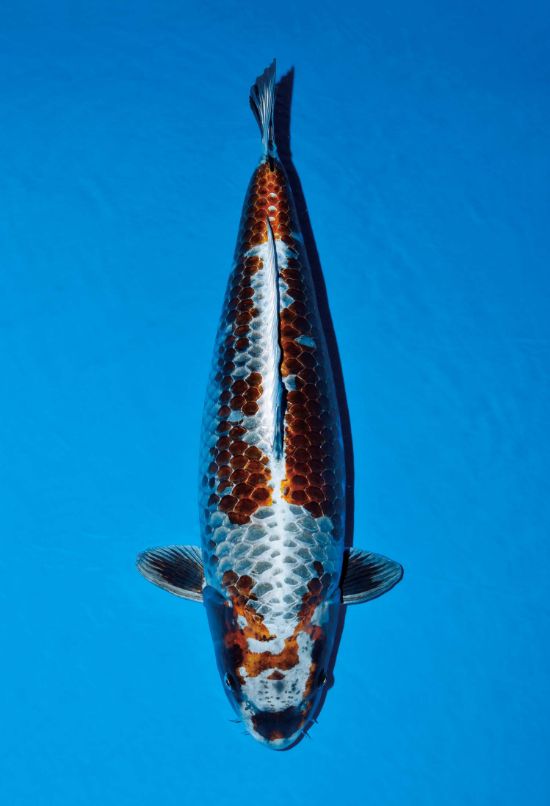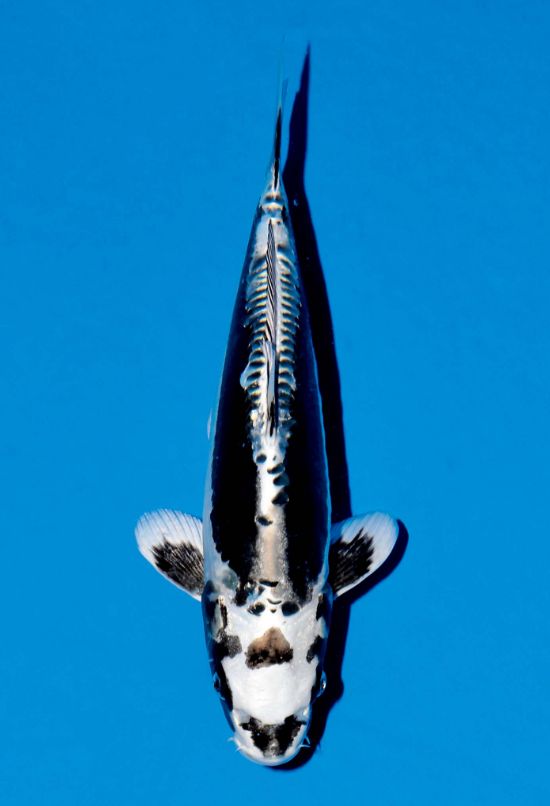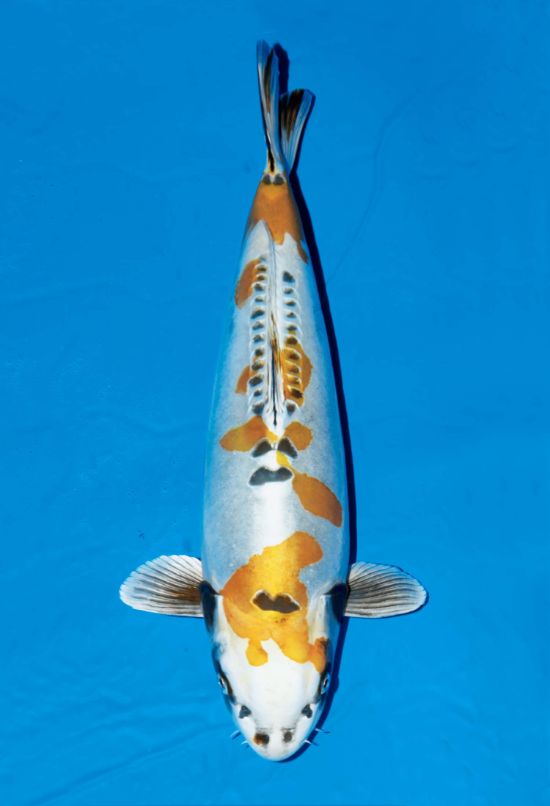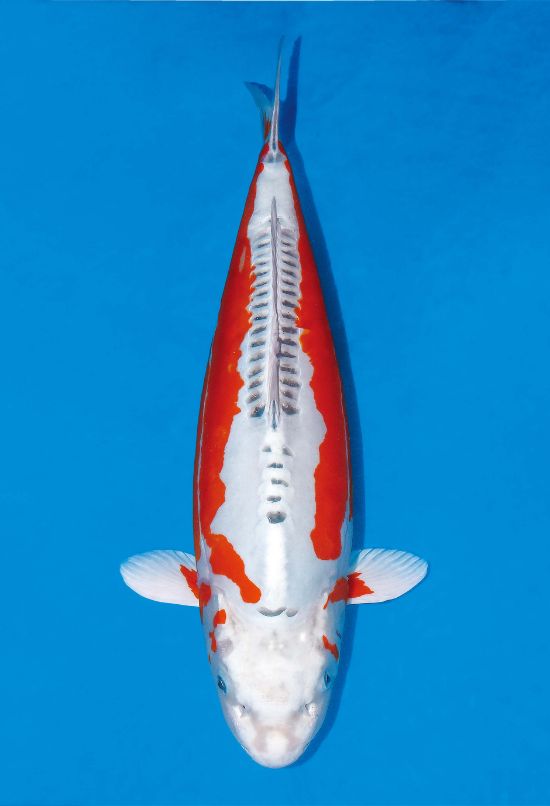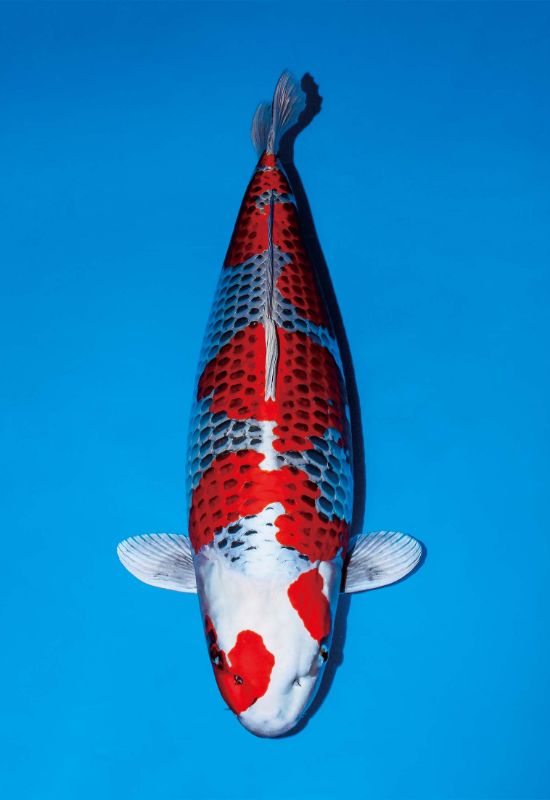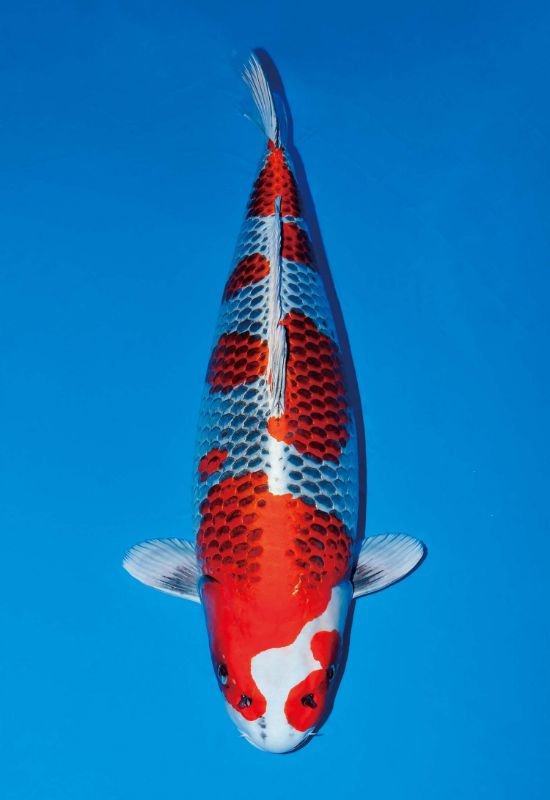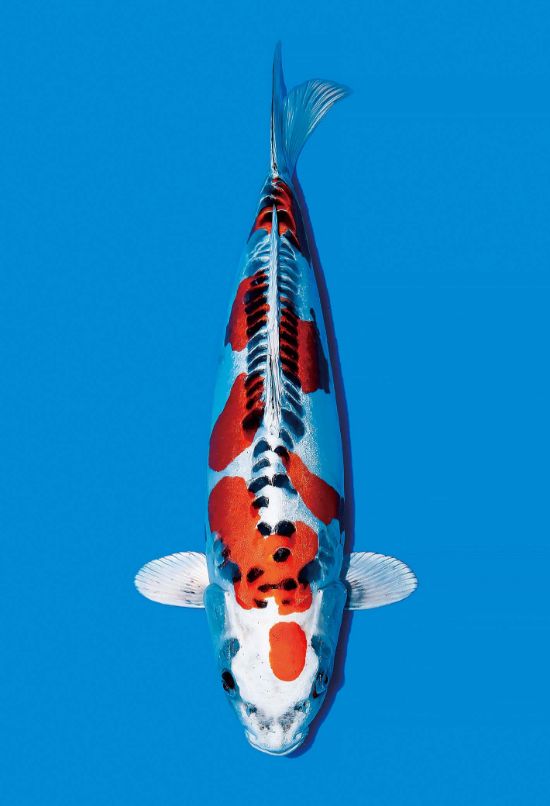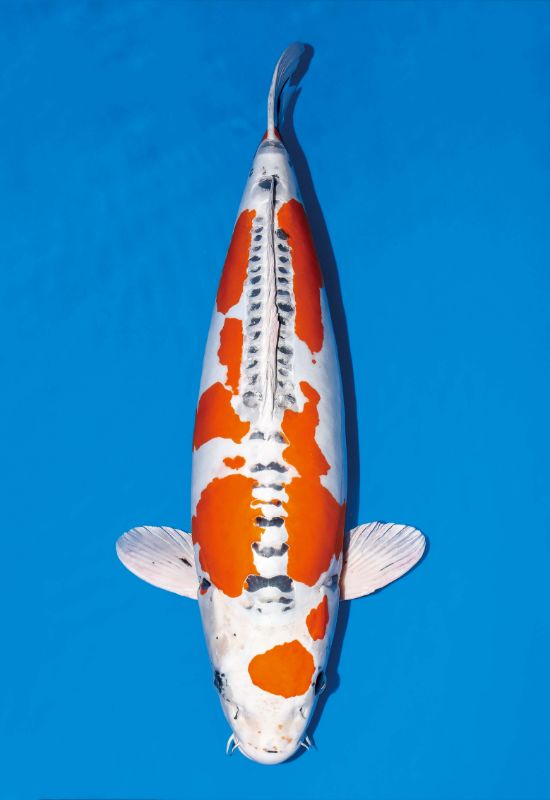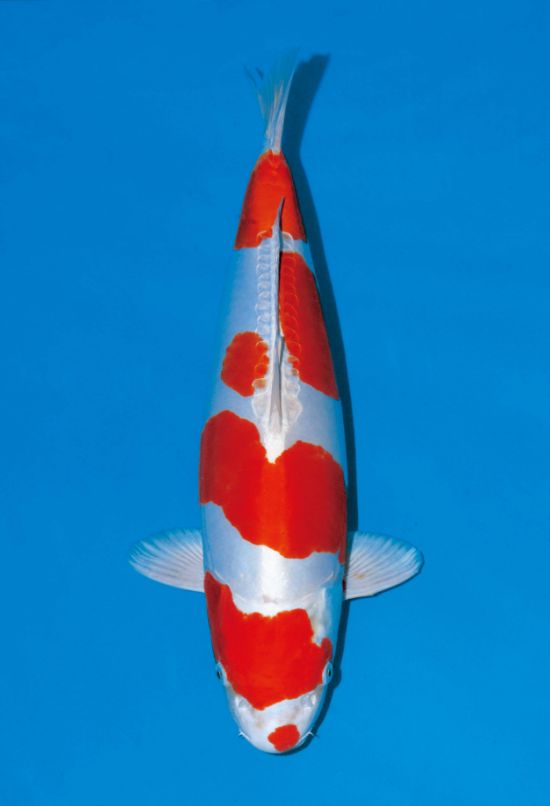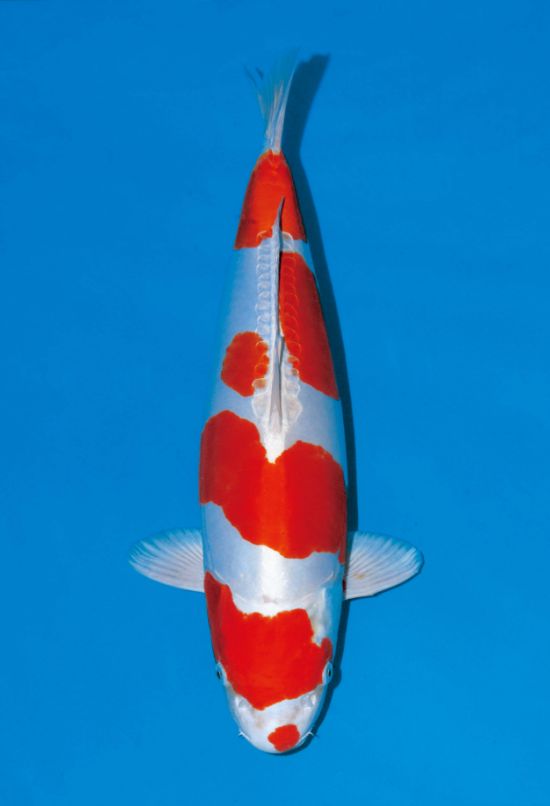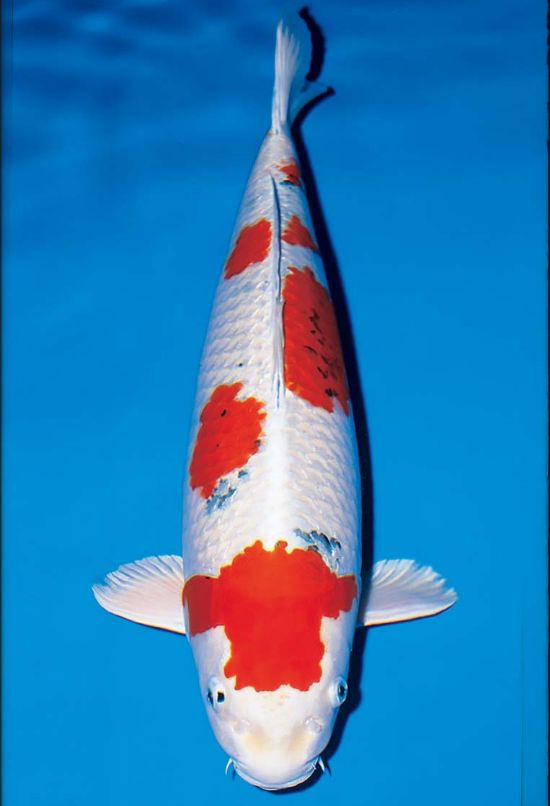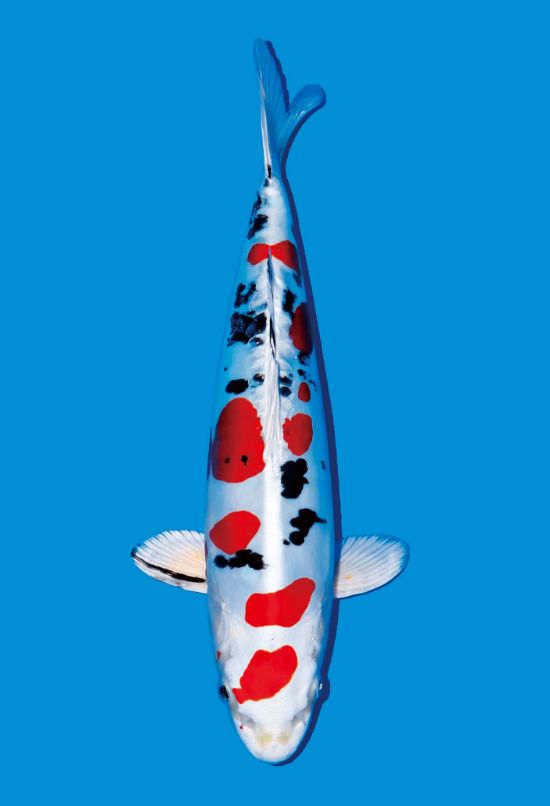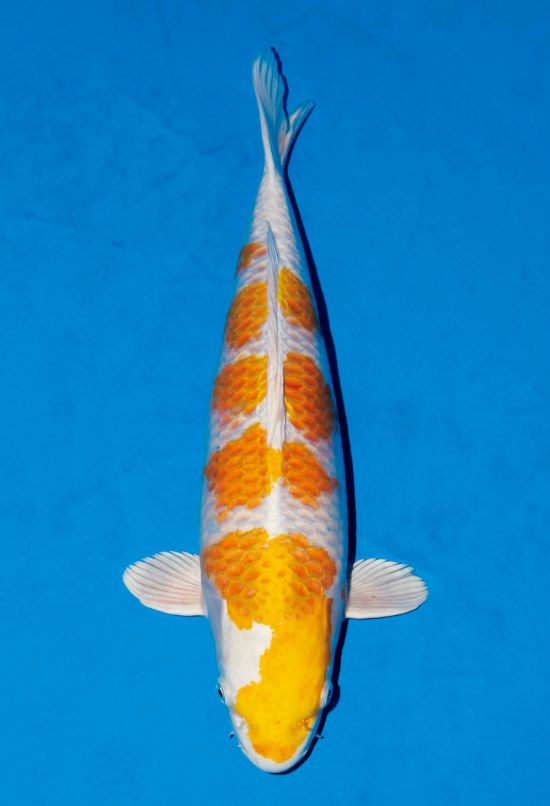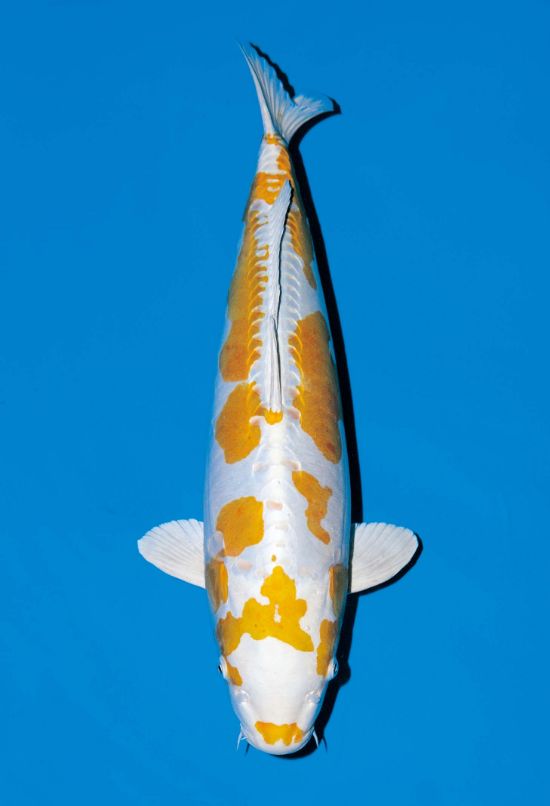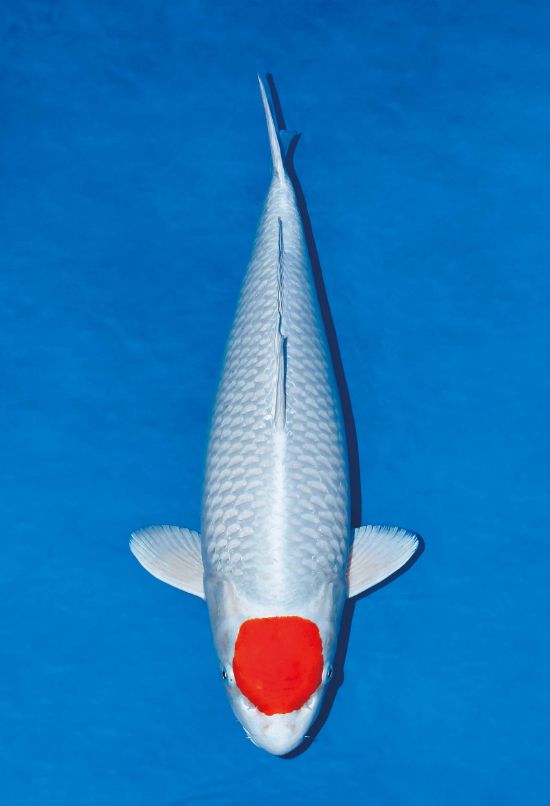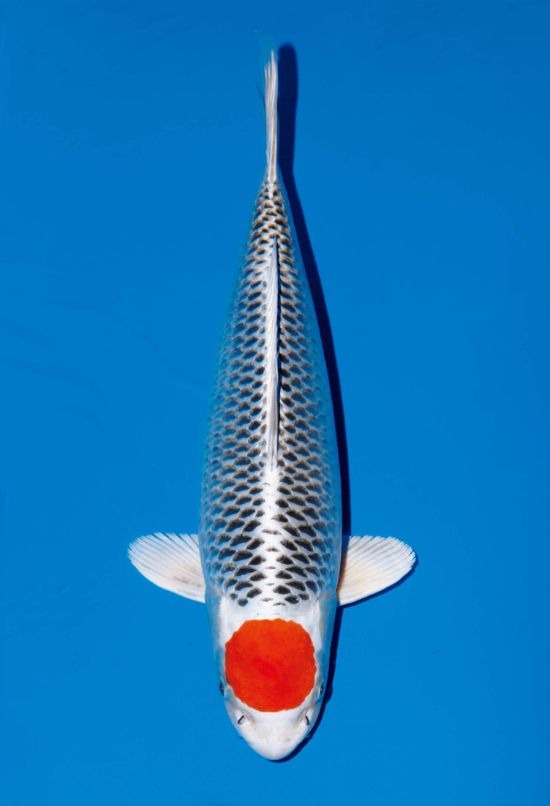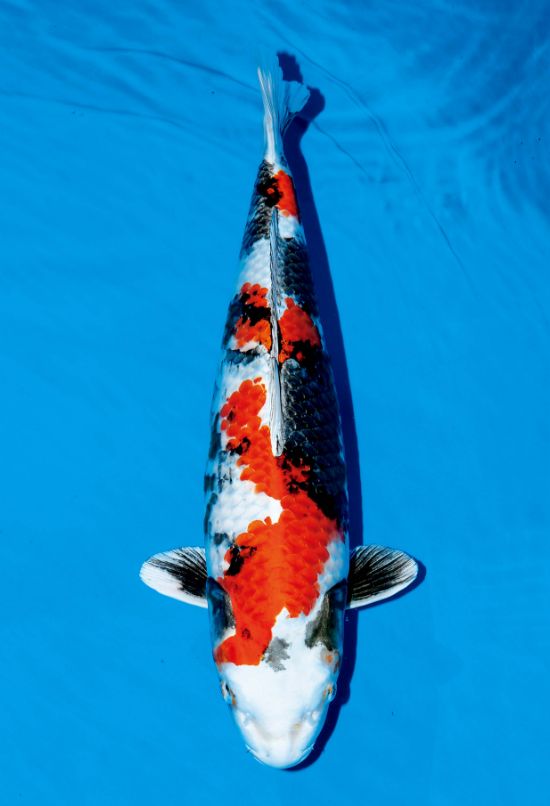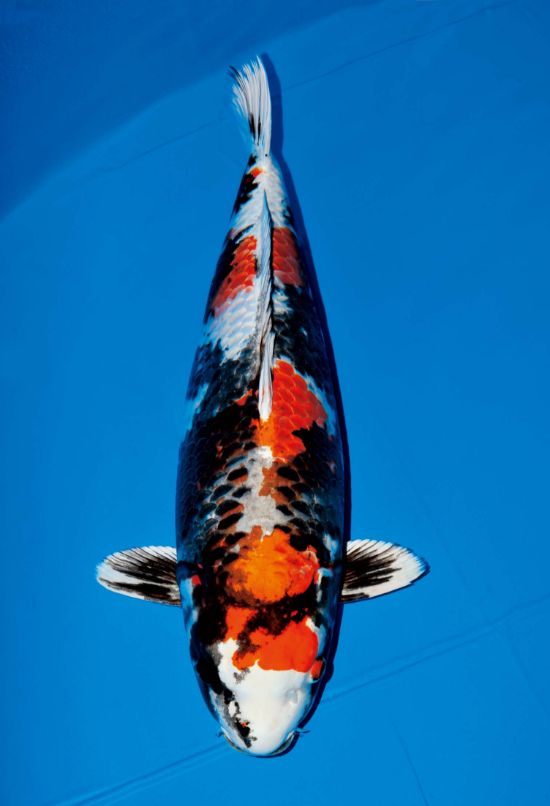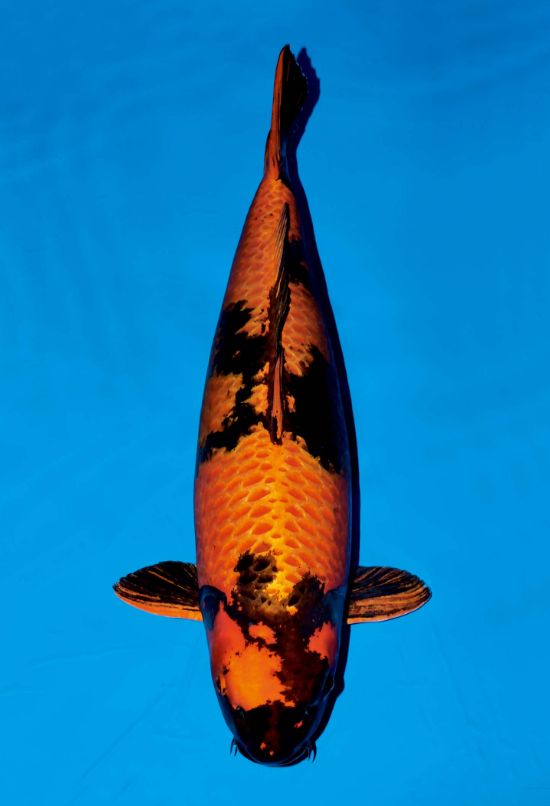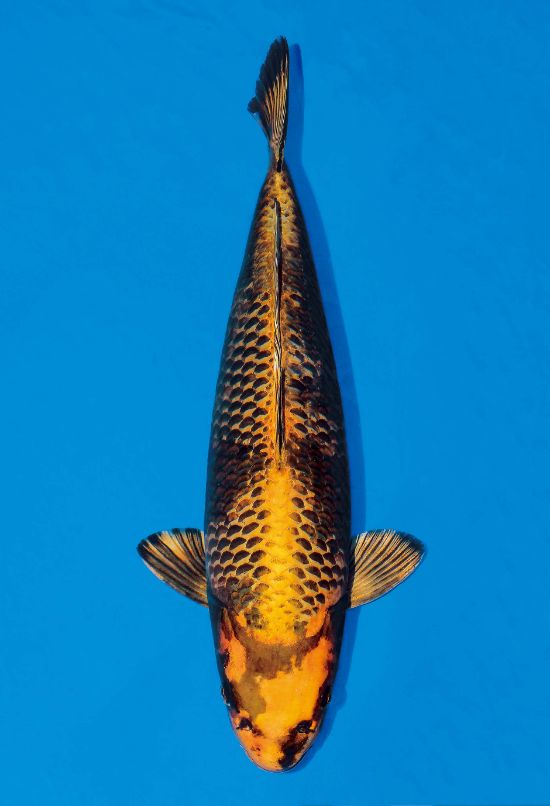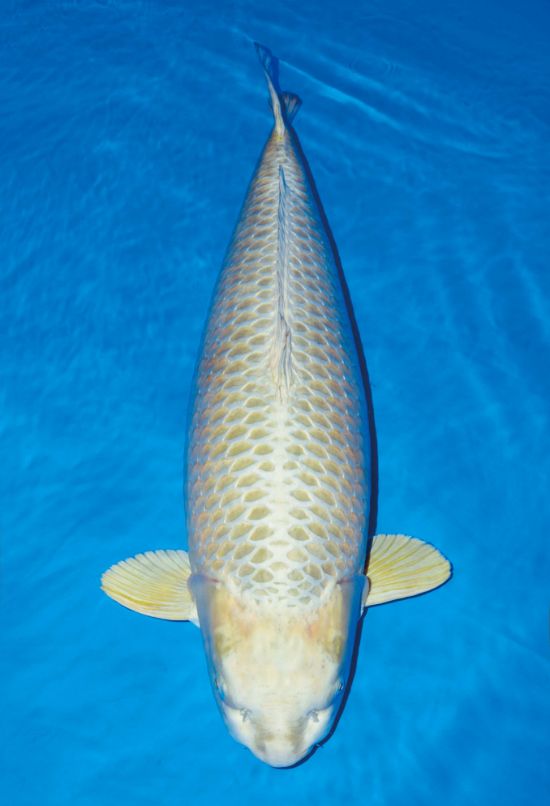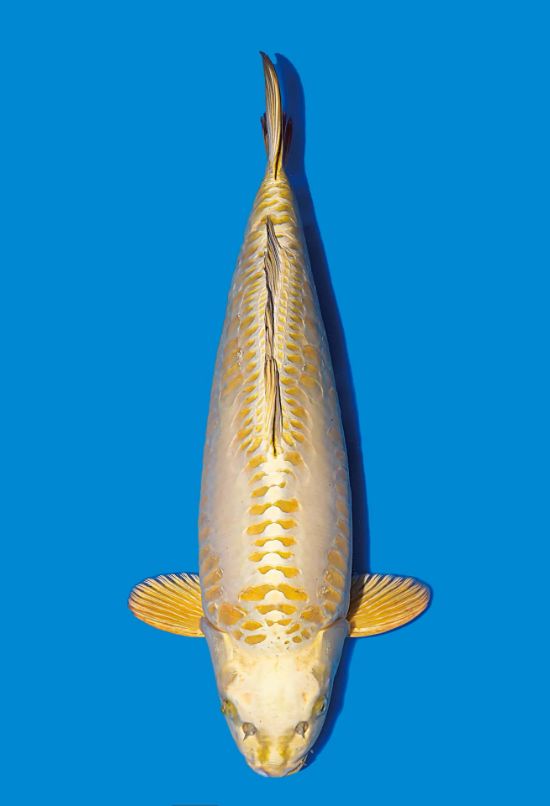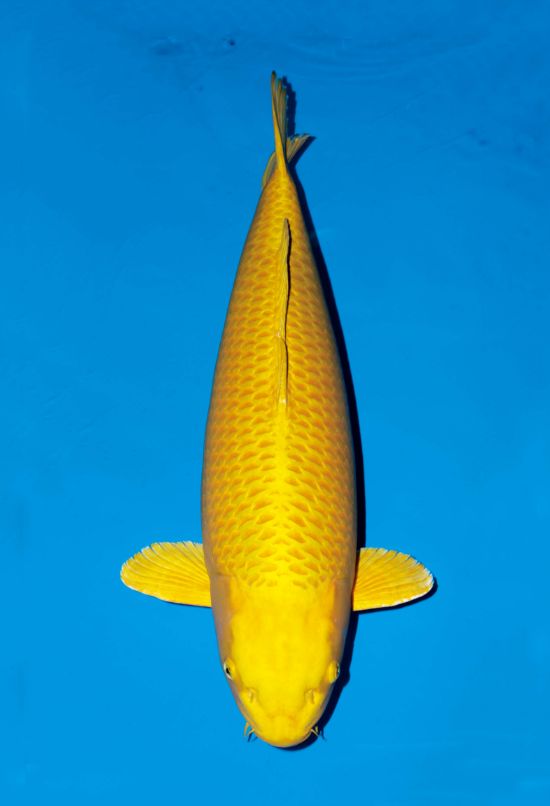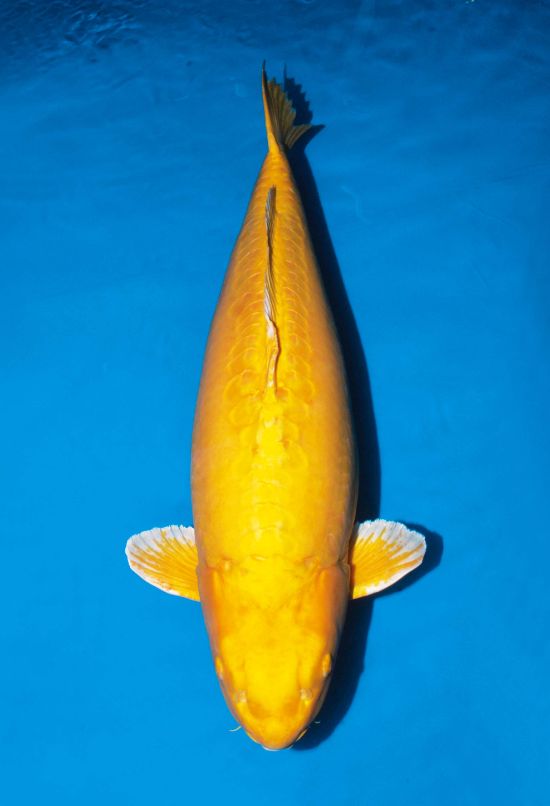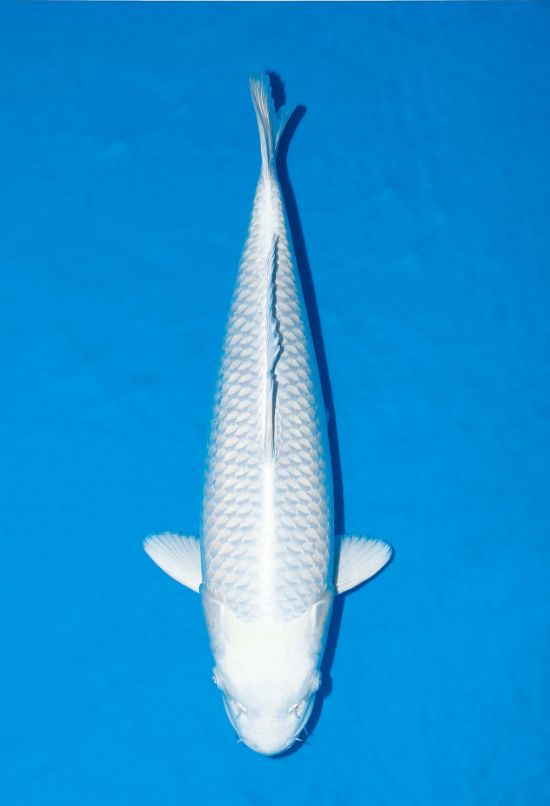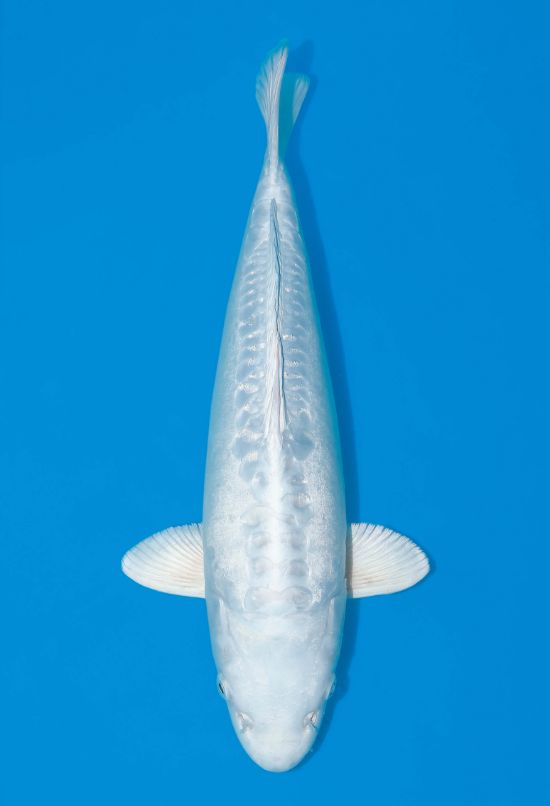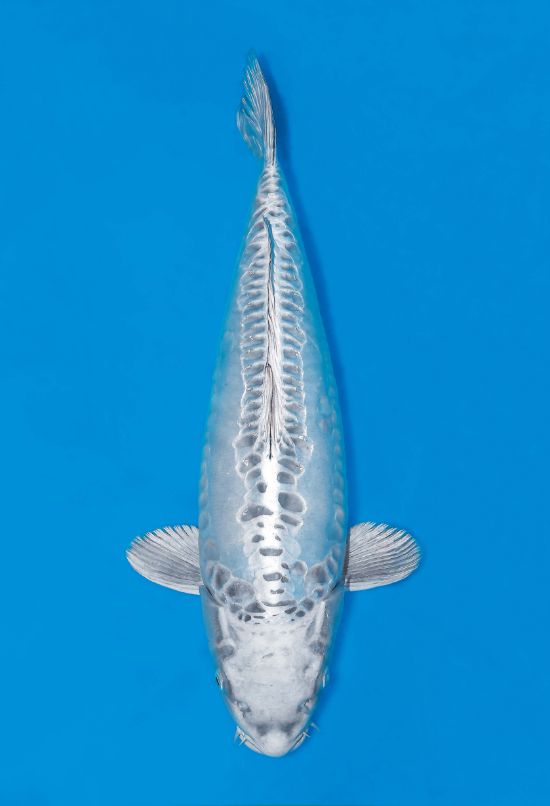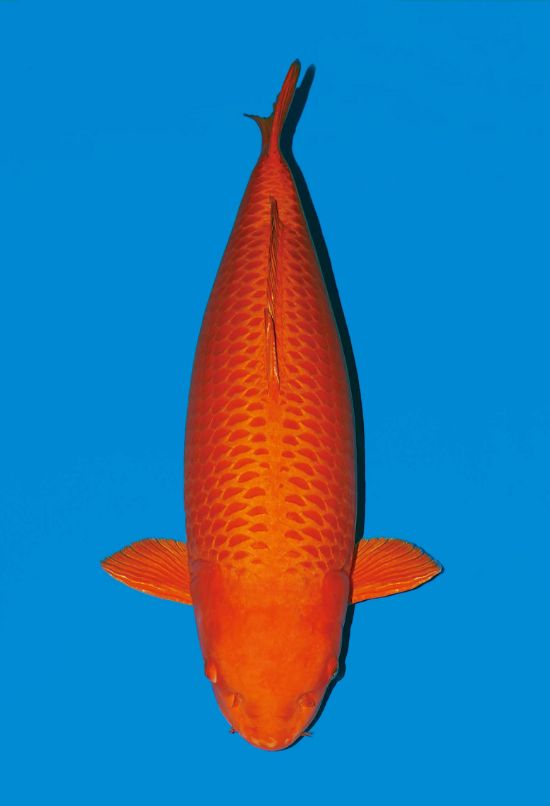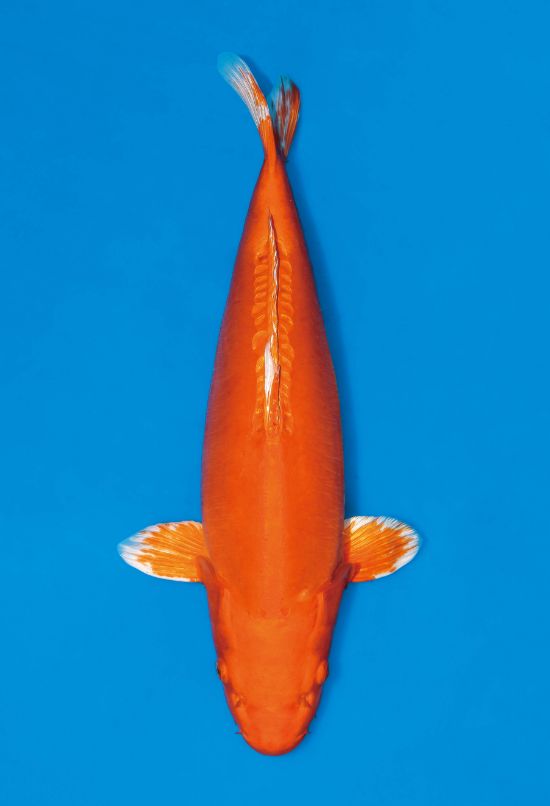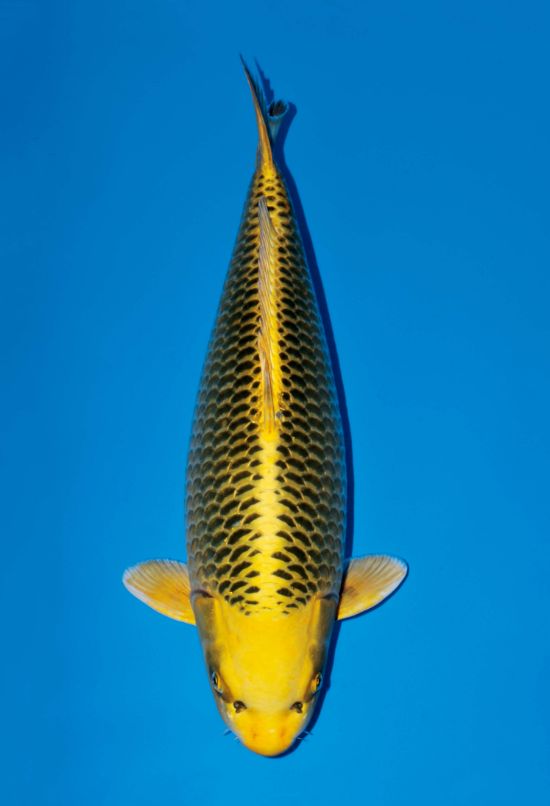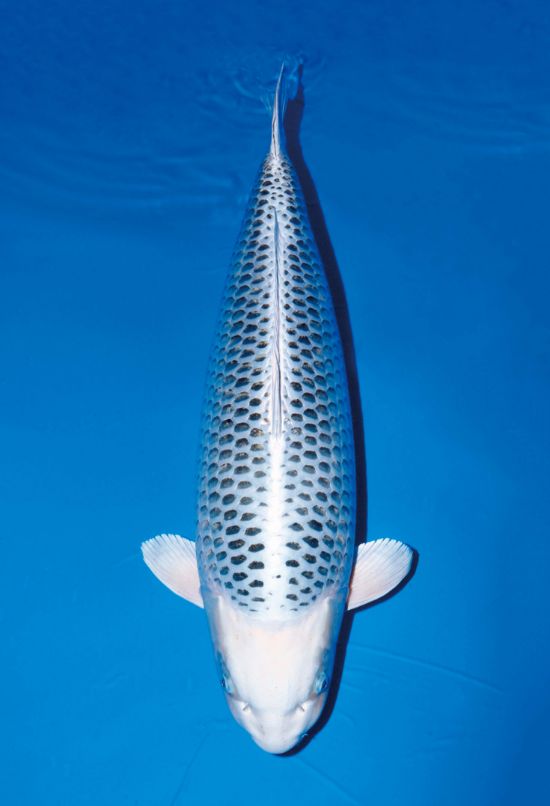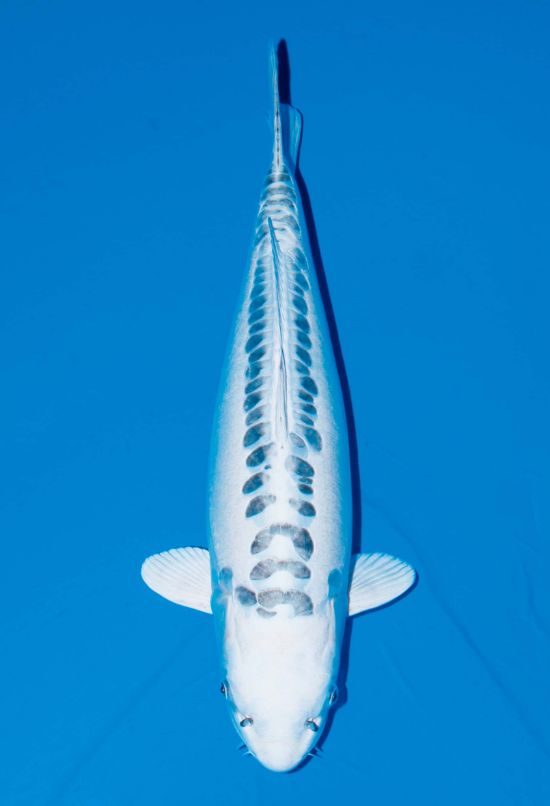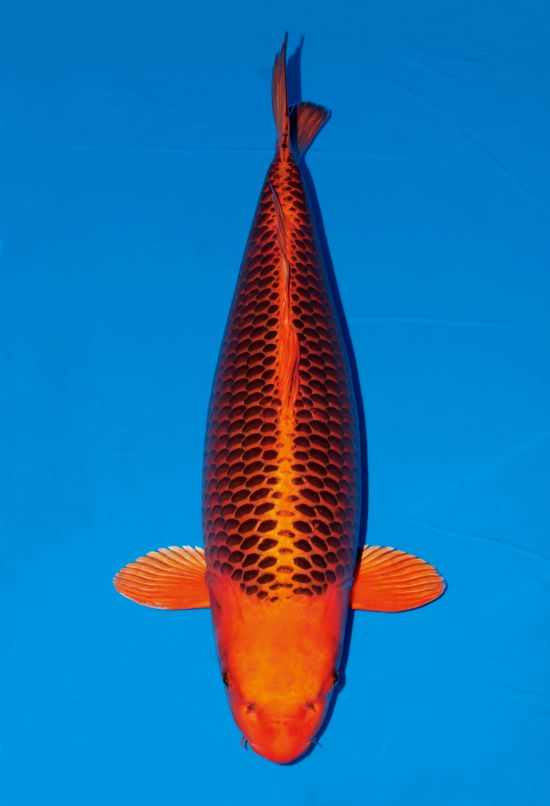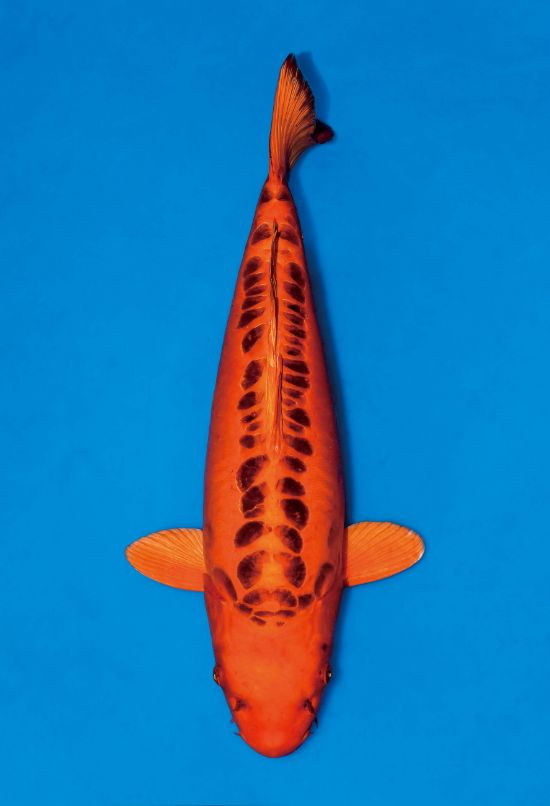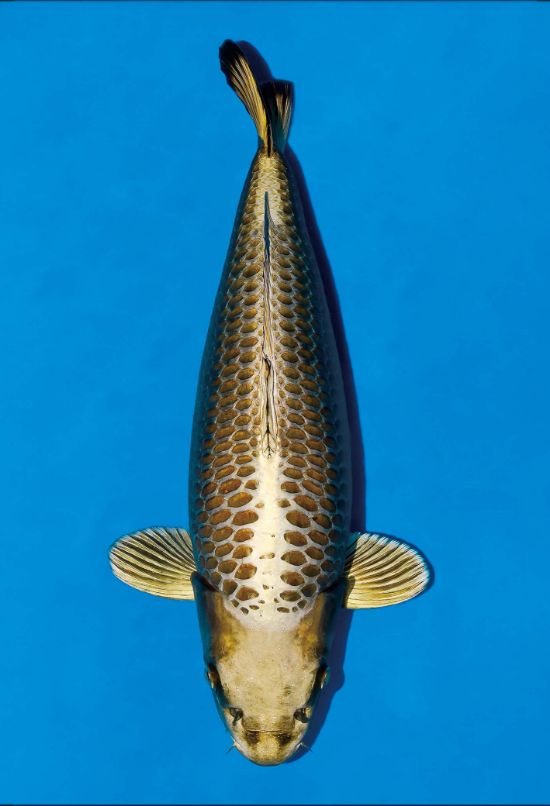Ginrin-sakura-ogon
Ginrin-sakura-ogon has shine golden or silver scales, and has the appearance characteristics of Sakura-ogon.
Ginrin-kin-showa
Ginrin-kin-showa has shine golden or silver scales, and has the appearance characteristics of Kin-Showa.
Ginrin-kujaku
Ginrin-kujaku has shine golden or silver scales, and has the appearance characteristics of Kujaku.
Ginrin-yamabuki-ogon
Ginrin-yamabuki-ogon has shine golden or silver scales, and has the appearance characteristics of Yamabuki-ogon.
Ginrin-platinum-ogon
Ginrin-platinum-ogon has shine silver scales, and has the appearance characteristics of Platinum-ogon.
Ginrin-orange-ogon
Ginrin-orange-ogon has shine golden or silver scales, and has the appearance characteristics of Orange-ogon.
Kanoko-kin-showa
Kanoko-kin-showa has the appearance characteristics of Kanoko-showa, and the whole body shines brightly.
Goshiki-shigure
Goshiki-shigure has an "asagidi" pattern and yellow imprints across the body. It is gently glowing all over.
Ginga
Ginga has a white body and shiny scales all over the body It has an ”asagidi" pattern across the body.
Beni-ginga
Beni-ginga has a white body and shiny scales all over the body It has an ”asagidi" pattern and red imprints across the body.
Kirin
Kirin has golden imprints across the body, and the whole body is shining. In Kirin, part of the scales are dyed in light black, and the entire body has a mesh pattern.
Kogane-ochiba
The whole body of Kogane-ochiba shines brightly, and those having the appearance characteristics of Ochiba-shigure.
Metalic-doitsu-ochiba
Metalic-doitsu-ochiba has almost no scales, the skin is exposed, the whole body is shining, and it has the appearance characteristics of Ochiba-shigure. The entire back is shining silver.
Kikokuryu
Kikokuryu has its whole body shines, and those having the appearance characteristics of Kumonryu.
Beni-kikokuryu
Beni-kikokuryu has its whole body shines and scarlet imprints across the body. It has the appearance characteristics of Kikokuryu.
Kin-kikokuryu
Kin-kikokuryu has its whole body shines and golden imprints across the body. It has the appearance characteristics of Kikokuryu.
Kinsui
Kinsui has its whole body shines and the appearance characteristics of Shusui.
Kujaku
Kujaku was produced based on Asagi, and is a variety that has added the characteristics of Hikari-moyo and red imprints through crossbreeding. Kujaku means peacock in Japanese, and the name Kujaku comes from the association with the beauty of the peacock when it opens its wings, and it is also called Kujaku-ogon.
A good Kujaku is said to have a metallic sheen all over its body, and a well-balanced pattern of red imprints on its body, which has a distinct mesh pattern of scales.
- JAS No.2009 Kujaku
- Kujaku has an ”asagidi" pattern and scarlet imprints on the back, and its whole body shines.
Doitsu-kujaku
Doitsu-kujaku has almost no scales on the whole body and the skin is exposed. It has the appearance characteristics of Kujaku.
Hikari-moyo
Hikari-moyo is a variety of Nishikigoi that has a metallic luster and pattern on its whole body, except for Hikari-muji and Hikari-utsuri, among the Hikari-mono that shines all over its body. There are Sakura-ogon, which has red and white patterns on its shiny body, Hariwake-ogon, which has gold and silver patterns. In addition, it can be said that the bright patterns are gorgeous among Nishikigoi, such as Kikusui with shining Doitsu-kohaku, Doitsu-yamato-nishiki also called Heisei-nishiki, and Doitsu-Hariwake-ogon.
A good Hikari-moyo is one that has a high degree of gloss over the whole body and that the patterns are arranged in a well-balanced manner.
- JAS No.2012 Hikari-moyo
- Hikari-moyo has imprints across the body other than a black background, and the whole body shines brightly.
Sakura-ogon
Sakura-ogon has the appearance characteristics of Kohaku, and the whole body shines brightly. It is also called Platinum-kohaku in Japan.
Kikusui
Kikusui has almost no scales on the whole body and the skin is exposed. The whole body shines brightly, and it has the appearance characteristics of Kohaku.
Yamatonishiki
Yamatonishiki has the appearance characteristics of Taisho-sanshoku, and the whole body shines brightly.
Doitsu-yamatonishiki
Doitsu-yamatonishiki has almost no scales on the whole body, the skin is exposed, the whole body is shining, and it has the appearance characteristics of the Taisho-sanshoku. It is also called Heisei-nishiki in Japan.
Hariwake-ogon
Hariwake-ogon has a white body and scales on its body. There are golden imprints across the body, and the whole body shines brightly.
Doitsu-hariwake-ogon
Doitsu-hariwake-ogon has almost no scales on the whole body and the skin is exposed. It has the appearance characteristics of Hariwake-ogon.
Tancho-sakura-ogon
Tancho-sakura-ogon has a circular scarlet imprint on its head and has the appearance characteristics of Sakura-ogon.
Tancho-kin-showa
Tancho-kin-showa has shine golden or silver scales, and has the appearance characteristics of Kin-showa.
Tancho-kujaku
Tancho-kujaku has a circular scarlet imprint on its head and has the appearance characteristics of Kujaku.
Doitsu-tancho-kujaku
Doitsu-tancho-kujaku has almost no scales on the whole body and the skin is exposed, and has the appearance characteristics of Tancho-kujaku.
Hikari-utsuri
Hikari-utsuri is a generic name for Nishikigoi that are bred from a variety with Utsurizumi such as Showa-sanshoku or Shiroutsuri and Hikari-muji. The merit of Hikari-utsuri is that you can see the sumi's texture on the shiny body. Kin-Showa is a variety that has the Showa-sanshoku pattern and its whole body shines brightly, and Gin-siroutsuri is a variety that has the Shiroutsuri pattern and shines brightly. Kin-kiutsuri is a variety with a shining pattern of Hiutsuri and Kiutsuri.
As with the Hikarimonos, the best ones have a high luster throughout the body, the patterns are well balanced and clearly arranged, and the ink pattern has a dynamic curl from head to tail.
- JAS No.2015 Hikari-utsuri
- Hikari-utsuri has a black body, and has imprints across the body. The whole body shines brightly and it has "utsuri-zumi" pattern across the body.
Kin-showa
Kin-showa has a black body and scales on its body. There are scarlet and white imprints across the body, and the whole body shines brightly. It has "utsuri-zumi" pattern across the body.
Doitsu-kin-showa
Doitsu-kin-showa has almost no scales on the whole body and the skin is exposed, and has the appearance characteristics of Kin-showa.
Koromo-kin-showa
Koromo-kin-showa has the appearance characteristics of Koromo-showa, and the whole body shines brightly.
Gin-shiroutsuri
Gin-shiroutsuri has a black body and scales on its body. There are white imprints across the body, and the whole body shines brightly. It has "utsuri-zumi" pattern across the body.
Doitsu-gin-shiroutsuri
Doitsu-gin-shiroutsuri has almost no scales on the whole body and the skin is exposed. It has the appearance characteristics of Gin-shiroutsuri.
Kage-gin-shiroutsuri
Kage-gin-shiroutsuri has the appearance characteristics of Gin-shiroutsuri, and it has a mesh-like ink pattern on white imprints.
Kin-kiutsuri
Kin-kiutsuri has a black body and scales on its body. There are gold imprints across the body, and the whole body shines brightly. It has "utsuri-zumi" pattern across the body.
Kage-kin-kiutsuri
Kage-kin-kiutsuri has the appearance characteristics of Kin-kiutsuri, and it has a mesh-like ink pattern on yellow imprints.
Mukashi-ogon
Mukashi-ogon has no imprints and its whole body shines in a turmeric color or dark gold. Part of scales, fins and head are black.
Doitsu-mukashi-ogon
Doitsu-mukashi-ogon has almost no scales on the whole body and the skin is exposed. It has the appearance characteristics of Mukashi-ogon.
Yamabuki-ogon
Yamabuki-ogon has no imprints and its whole body shines bright reddish yellow (Yamabuki-color called in Japan).
Doitsu-yamabuki-ogon
Doitsu-yamabuki-ogon has almost no scales on the whole body and the skin is exposed. It has the appearance characteristics of Yamabuki-ogon.
Platinum-ogon
Platinum-ogon has no imprints and its whole body shines white or light gray (Platinum-color called in Japan).
Doitsu-platinum-ogon
Doitsu-platinum-ogon has almost no scales on the whole body and the skin is exposed. It has the appearance characteristics of Platinum-ogon.
Nezu-ogon
Nezu-ogon has no imprints and its whole body shines silver-gray.
Doitsu-nezu-ogon
Doitsu-nezu-ogon has almost no scales on the whole body and the skin is exposed. It has the appearance characteristics of Nezu-ogon.
Orange-ogon
Orange-ogon has no imprints and its whole body shines reddish yellow (Orange-color called in Japan).
Doitsu-orange-ogon
Doitsu-orange-ogon has almost no scales on the whole body and the skin is exposed. It has the appearance characteristics of Orange-ogon.
Ki-matsuba-ogon
Ki-matsuba-ogon shines in turmeric or dark gold, and it has a "matsuba-mon" on the entire back. It is also called kin-matsuba in Japan.
Gin-matsuba
Gin-matsuba shines silvery white, and it has a "matsuba-mon" on the entire back.
Doitsu-gin-matsuba
Doitsu-gin-matsuba has almost no scales on the whole body and the skin is exposed. It has the appearance characteristics of Gin-matsuba.
Aka-matsuba-ogon
Aka-matsuba-ogon shines red or vermilion, and it has a "matsuba-mon" on the entire back.
Mizuho-ogon
Mizuho-ogon has almost no scales on the whole body and the skin shined orange is exposed. Part of scales shines black.
Kin-kabuto
Kin-kabuto has a shiny gold-brown body, and the left and right sides of the head have a gold-colored pattern resembling the horns of an elk.
Gin-kabuto
Gin-kabuto has a shining silver body, and the left and right sides of the head have a shining silver pattern like the shape of the horns of an elk.

